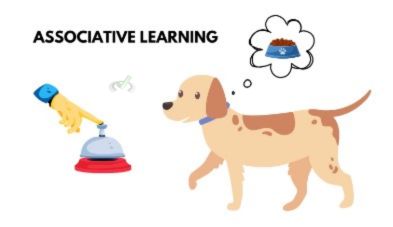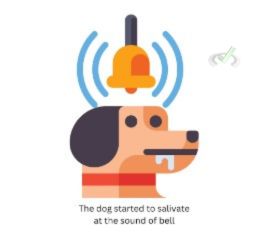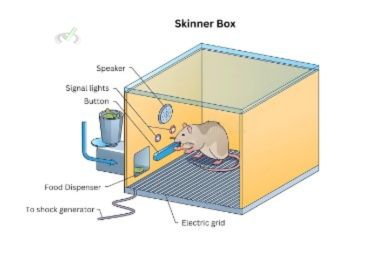Associative learning is a foundational concept in psychology. It explains how we connect different events in our lives by noticing patterns and associations in our environment. There are two main types of associative learning: classical conditioning and operant conditioning. Understanding these concepts is important for both academic and practical reasons.
I. Understanding Associative Learning
Associative learning means learning that certain events occur together. This can happen through associations between stimuli or between behavior and consequences.

Classical Conditioning
Classical conditioning involves learning to link two or more stimuli. This was first studied by Ivan Pavlov, a Russian physiologist, who observed that dogs would start to salivate at the sight of food and at the sound of the footsteps of the person bringing the food.

- Unconditioned Stimulus (US): Something that naturally triggers a response. In Pavlov’s experiment, food is the unconditioned stimulus because it makes the dog salivate naturally.
- Unconditioned Response (UR): The automatic response to the unconditioned stimulus. In Pavlov’s experiment, the dog's salivation in response to food is the unconditioned response.
- Conditioned Stimulus (CS): This initially does not trigger the unconditioned response. In Pavlov’s experiment, the sound of footsteps started as a neutral stimulus.
- Conditioned Response (CR): After repeated pairing with the unconditioned stimulus, the neutral stimulus becomes the conditioned stimulus, triggering a response. The dog began to salivate at the sound of the footsteps alone. This salivation is now the conditioned response.
Fundamental Processes in Classical Conditioning
- Acquisition: The phase where the neutral stimulus is associated with the unconditioned stimulus so that the neutral stimulus comes to evoke the conditioned response.
- Extinction: This happens when the conditioned stimulus is presented repeatedly without the unconditioned stimulus, leading to the conditioned response weakening.
- Spontaneous Recovery: The reoccurrence of an extinguished conditioned response after a pause.
- Generalization: When a conditioned response starts occurring in response to stimuli that are similar to the conditioned stimulus.
- Discrimination: The ability to distinguish between the conditioned stimulus and other stimuli that do not signal an unconditioned stimulus.
Operant Conditioning
Operant conditioning involves learning to associate behavior with its consequences. B.F. Skinner, an American psychologist, studied this by using a "Skinner box" to observe how rats pressed a lever to get food.

- Reinforcement: When a favorable consequence follows a behavior, it is more likely to happen again.
- Positive Reinforcement: Adding something pleasant to increase a behavior (e.g., giving a dog a treat for sitting on command).
- Negative Reinforcement: Removing something unpleasant increases a behavior (e.g., taking painkillers to relieve a headache increases the likelihood of retaking painkillers when in pain).
- Punishment: When a behavior is followed by an unfavorable consequence, it is less likely to happen again.
- Positive Punishment: Adding something unpleasant to decrease a behavior (e.g., scolding a child for drawing on walls).
- Negative Punishment: Removing something pleasant to decrease a behavior (e.g., taking away a teenager’s phone for breaking curfew).
Important Concepts in Operant Conditioning
- Primary Reinforcers: Natural, innately satisfying reinforcers (e.g., food, water).
- Secondary Reinforcers: Learned reinforcers that gain value through association with primary reinforcers (e.g., money, praise).
- Schedules of Reinforcement:
- Fixed-Ratio: Reinforcement after a set number of responses.
- Variable-Ratio: Reinforcement after an unpredictable number of responses.
- Fixed-Interval: Reinforcement after a fixed amount of time.
- Variable-Interval: Reinforcement after varying amounts of time.
- Shaping: Gradually guiding behavior toward closer approximations of the desired behavior through reinforcement.
II. Factors Affecting Associative Learning
Several factors can influence how effectively we learn through association:
Timing
The stimuli should be close in time. In classical conditioning, the conditioned stimulus must come before the unconditioned stimulus.
Frequency
More pairings generally strengthen the association. For example, the more often a dog hears footsteps before receiving food, the stronger the salivation response.
Intensity
Stronger or more noticeable stimuli can create stronger associations. For example, a loud noise might elicit a stronger response than a soft one.
III. Theories of Associative Learning
Contiguity Theory
Learning occurs when events happen close together in time and space. If two events occur together repeatedly, we learn to associate them.
Contingency Theory
The predictability of the association matters. It's not just about timing but how reliably one event predicts the other. For example, if the footsteps always predict the arrival of food, the dog learns the association better than if the food only sometimes follows the footsteps.
IV. Effects of Associative Learning
Positive Effects
- Adaptive Behavior: Helps organisms adapt to their environment by learning from experiences. For instance, learning to avoid touching a hot stove after being burned.
- Skill Acquisition: Helps in learning new skills through reinforcement. For example, practicing and receiving feedback while learning a musical instrument.
Negative Effects
- Maladaptive Behavior: Can result in harmful habits. For example, developing a fear of dogs after being bitten once.
- Conditioned Fears: Certain associations can lead to irrational fears or phobias. For instance, one may fear all dogs because of one negative experience.
Limitations of Associative Learning
- Overgeneralization: Sometimes, the response extends to stimuli that are not relevant.
- Resistance to Extinction: Some learned behaviors or responses can be difficult to unlearn.
- Context-Dependent Learning: Behaviors learned in a specific context may not transfer well to different contexts.
V. Bridging Associative Learning to Other Areas
Associative learning connects to many psychology topics and beyond:
Behavioral Therapy
Techniques like systematic desensitization use associative learning to treat phobias. Gradual exposure to a feared object can help create new, positive associations.
Habit Formation and Change
Understanding reinforcement and punishment helps form new habits or break bad ones. For example, replacing smoking with healthier habits involves understanding and altering the reinforcements that maintain the smoking behavior.
VI. Wrap Up/Key Terms
Let's summarize the key points:
- Associative Learning: Learning that certain events occur together.
- Classical Conditioning: Learning to link two or more stimuli and anticipate events.
- Unconditioned Stimulus (US): Triggers a natural response.
- Unconditioned Response (UR): The natural response to US.
- Conditioned Stimulus (CS): Initially neutral, becomes associated with US.
- Conditioned Response (CR): Learned response to the CS.
- Operant Conditioning: Learning based on the consequences of behavior.
- Positive Reinforcement: Adding a reward to increase behavior.
- Negative Reinforcement: Removing something unpleasant to increase behavior.
- Positive Punishment: Adding something unpleasant to decrease behavior.
- Negative Punishment: Removing something pleasant to decrease behavior.
- Contiguity Theory: Learning occurs when events are close in time and space.
- Contingency Theory: Predictability of events matters in learning.
VII. Practice
Test your understanding with these questions:
Sample Practice Question 1
What is classical conditioning?
A. Learning through the consequences of behavior.
B. Learning that occurs through associations between stimuli.
C. Learning that does not involve any stimuli.
D. Learning that only involves rewards.
Ans. B
Classical conditioning involves learning to link two or more stimuli and anticipate events.
Sample Practice Question 2
What is positive reinforcement?
A. Adding something unpleasant to decrease behavior.
B. Removing something pleasant to decrease behavior.
C. Adding a reward to increase behavior.
D. Removing something unpleasant to increase behavior.
Ans. C
Positive reinforcement involves giving a reward to encourage the repetition of a behavior.
Associative learning helps explain many everyday behaviors and how we can change or modify them for better outcomes. Understanding these concepts can also aid in various fields, such as therapy, habit formation, education, and marketing.







 To help you achieve your goal MCAT score, we take turns hosting these
To help you achieve your goal MCAT score, we take turns hosting these 





















 reviews on TrustPilot
reviews on TrustPilot